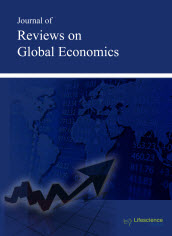jrge
Abstract - The Effects of Leisure Agricultural Experience Activities on Satisfaction: Empirical Evidence from Different Tourist Styles in Taiwan
|
|
Abstract: Leisure agricultural activities play an important role in rural tourism. The research presented in this research was used to investigate the impression of leisure agricultural activities on different groups of tourists. Using the four dimensions of the Experience Economy suggested by Pine and Gilmore (1999), this research analyzes the impacts of entertainment, educational, aesthetic, and escapism experiences on tourist satisfaction. The data used in the study were gathered by surveying 374 tourists in the leisure agricultural area of Lugu township in central Taiwan. By using factor analysis and cluster analysis, tourists in this study were categorized into two groups, namely, a ‘deep experience group’ and ‘moderate experience group,’ based on the degree to which they experienced the activities. Through the use of a structural equation model, the empirical results indicated that the correlation between the activities experienced and the degree of satisfaction were distinctive for each group of tourists. Keywords: Leisure tourism, Experience economy, Structural equation model, Experience Activities. |
Abstract - Evaluation Indicators and Development Strategies of Agricultural Revitalization for Rural Rejuvenation
|
|
Abstract: The goal of rural rejuvenation is to establish newly regenerated rural villages via economic development and beautification. However, it is necessary to engage agriculture in rural areas as a basis to reach the goal. In order to effectively promote agricultural development, the objective of this study is to develop the related indicators as evaluation criteria. A modified Delphi method is applied to develop the questionnaire. The indicators are divided into two categories: requirement and implementation evaluation indicators. This implies indicators in both sides should be considered simultaneously for effectively promoting agricultural development. There are four dimensions, consisting of twelve items, which are included in requirement indicators. The four dimensions are to (1) activate agricultural production (2) to promote agricultural marketing (3) to construct the distinguishing features of rural life and culture, and(4) to develop leisure agriculture and rural village experiences. The implementation indicators are comprised of five dimensions including 21 items. The five dimensions are (1) community factors (2) human resource factors (3) local resource surveys (4) environmental and facilities planning, and (5) government subsidies and guidance. To determine the relative importance sequence of the target evaluation indicators, the fuzzy analytic hierarchy process (FAHP) is applied to calculate the weight for each item. Then, the quality function development method (QFD) is adopted to explore the relative importance sequence of implementing indicators. Based upon the important items of evaluation indicators, this study proposes the development strategies recommended for the agricultural authority. Keywords: Rural rejuvenation, agricultural revitalization, evaluation indicators,fuzzy analytic hierarchy process,quality function development method. |
Abstract - Pros and Cons of the Impact Factor in a Rapidly Changing Digital World
|
|
Abstract: The purpose and novlty of the paper is to present arguments for and against the use of the Impact Factor (IF) in a rapidly changing digital world. The paper discusses the calculation of IF, as well as the pros and cons of IF. Editorial policies that affect IF are examined, and the merits of open access online publishing are presented. Scientific quality and the IF dilemma are analysed, and alternative measures of impact and quality are evaluated. The San Francisco declaration on research assessment is also discussed. Keywords: Impact Factor, Quality of research, Pros and Cons, Implications, Digital world, Editorial policies, Open access online publishing, SCIE, SSCI. |
Abstract - Retroeconomics – Moving from Dying to Brisk Economy
|
|
Abstract: The paper offers a new concept of the technological backwardness in many, mostly in poor countries – the retroeconomics. The goal of the research is to set out the main reasons why in many (and first of all in poor) countries the economies used obsolete technologies. Such countries are getting to into the trap of technological dependency on the economically developed countries. The feasible tools for a technological leap from such dependency are discussed. The main threat of the preservation of the retroeconomy – its zombification is discussed as a main barrier for technological updating of economy, and in general as an obstacle for Schumpeterian creative destruction. Much importance is given to the key principle of bankruptcy procedures against zombified retro-firms. The bankruptcy legislation should ensure the timely liquidation of non-viable firms. A country’s legislative framework should strive for the establishment of a sound legal space on the market, when only really viable firms will exist. The role of the government is very important to resolve the problem of the technological backwardness. Keywords: Necroeconomy, Zombie-economy, Retroeconomy, Technological Backwardness, Bankruptcy. |






















